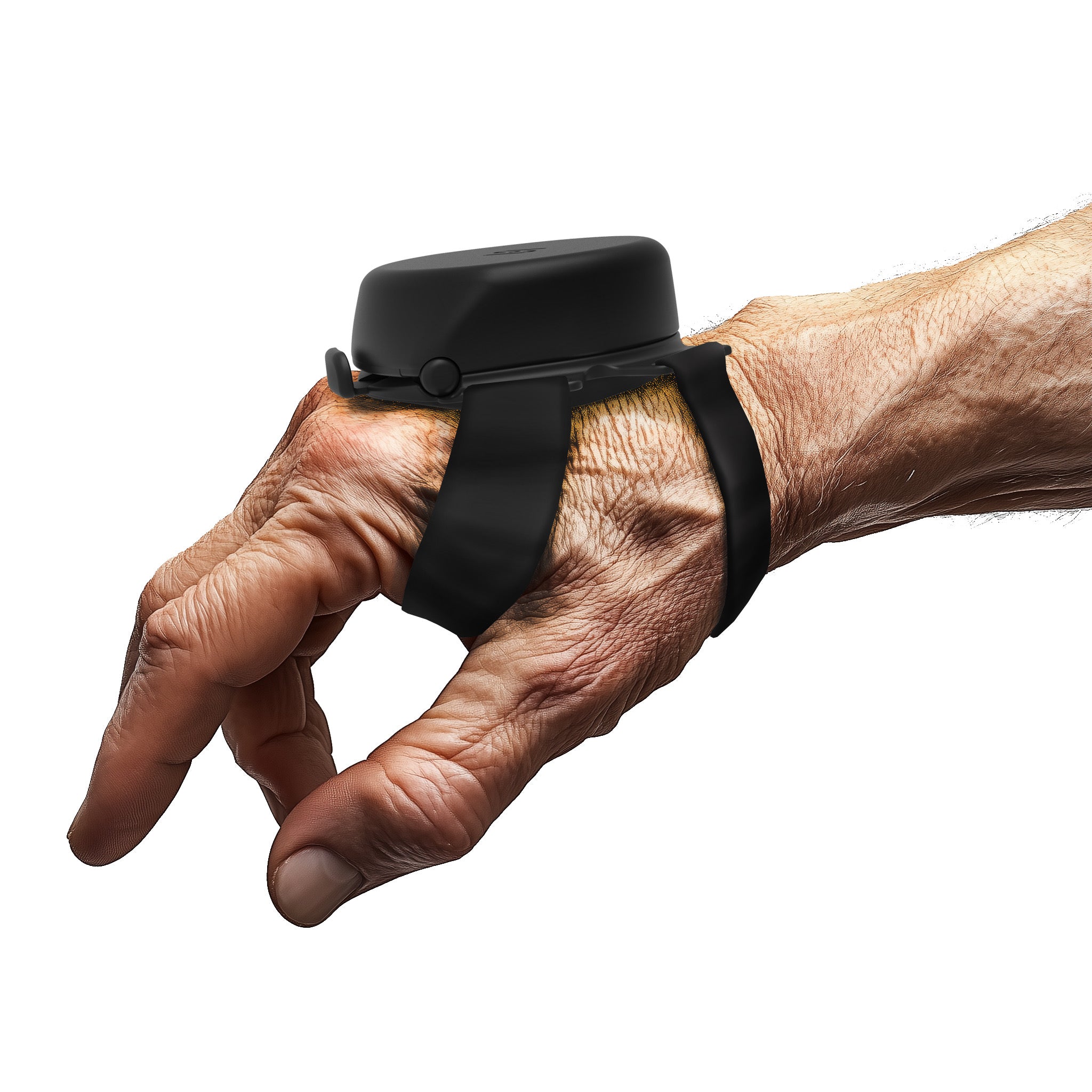Parkinson's Disease (PD) impacts millions of people in the world with varying symptoms that can severely impair the quality of life. Interestingly, these manifestations tend to differ between both genders. For instance, men are statistically more likely to develop Parkinson’s Disease (PD) than women. Studies have suggested that hormonal differences, particularly the protective effects of estrogen, might contribute to this disparity. Estrogen is thought to have a neuroprotective role, potentially delaying the onset of symptoms or reducing their severity in women. As women age and estrogen levels drop, however, the disease can progress more rapidly, and symptoms may become more prominent.
This blog further discusses the male-female differences in Parkinson's Disease symptoms, early signs, and prevalence to have a better understanding of gender differences concerning this condition. We will delve into the gender-specific nuances of Parkinson's Disease, highlighting how symptoms of Parkinson's disease in men and early symptoms of Parkinson's disease in women differ significantly. We'll also examine the broader implications of these differences in treatment and management, enhancing awareness and support for those affected by PD.
Genetic and Environmental Factors Influencing Gender Differences in Parkinson's Disease
Genetic Predispositions Affecting Men and Women Differently
Research continues to uncover the complex genetic landscape that underpins Parkinson's Disease (PD), revealing that genetic predispositions may not only predispose individuals to the disease but can also influence the way it manifests differently in men and women. For example, specific genetic mutations linked to Parkinson’s, like LRRK2 and GBA, show variable penetrance and expression that might be modulated by gender-specific factors.
Studies have suggested that the impact of these mutations could be moderated by hormonal influences, which vary significantly between genders. For instance, estrogen in women has been shown to have neuroprotective effects that might interact with genetic pathways to delay the early signs of Parkinson's disease in women or alter the progression of Parkinson’s. Men, on the other hand, with less of this hormonal protection, might experience more aggressive progression of the disease when specific genes are mutated, highlighting the Parkinson's Disease (PD) for men vs women dynamics.
Environmental Factors and Their Gender-Specific Impacts
Environmental factors such as exposure to pesticides or heavy metals and other neurotoxic compounds have been associated with a raised incidence of Parkinson's Disease (PD). Different exposure levels and health effects can vary between genders, often significantly influenced by occupational and other lifestyle differences. Traditionally, men have been more likely to work in agriculture and industrial occupations that expose them more to these neurotoxic agents, potentially leading to higher rates of symptoms of Parkinson's disease in men.
There are also differences in exposure according to rural or urban habitat conditions. In a rural area where pesticides are far more commonly used, and there is virtually no control over industrial emissions, it is possible to have a gender-specific difference in incidences of Parkinson's Disease (PD), depending on the local workforce demographics and nature of agricultural practices, emphasizing the aspect of Parkinson's Disease (PD) for men vs. women.
Lifestyle factors, like smoking and some aspects of diet, will also be significantly influenced by social and cultural gender norms and, to some extent, modulate the risk of environmental exposures. Those dietary differences may lead to differential metabolism of toxins by the body, which can further explain some aspects of the differences in the prevalence and progression of Parkinson's among men and women, including early symptoms of Parkinson's Disease (PD) in women and early signs of Parkinson's Disease (PD) in men.
Impact of Parkinson's on Mental Health by Gender

Parkinson's Disease (PD) is well-known for its physical symptoms, such as tremors and rigidity. However, its impact on mental health is significant and often differs between men and women. These variations can affect not only the psychological challenges associated with the disease but also the effectiveness of strategies used to manage mental health issues.
Mental Health Challenges in Men with Parkinson's
Men may experience an array of mental disorders associated with Parkinson’s disease, and they might feel the effects of this disorder as depression, anxiety, and even apathy, highlighting the early signs of Parkinson's Disease (PD) in men. The only caveat here is that such symptoms can be less pronounced in the case of women. Men report experiencing sadness less often and are less inclined to reach out for help when faced with emotional turmoil. This has the unfortunate implication of depression being left unidentified. Instead, men suffering from depression could show signs of low motivation, problems with concentration, and irritability rather than exhibiting sadness which would result in injuries and difficulties in detection and treatment.
Societal norms regarding masculinity, where men are discouraged from showing vulnerability, can also further compound the issues related to mental health in men. This is often due to societal expectations that men should appear strong and capable of handling challenges, regardless of the underlying problems they may be facing—even as those issues worsen. This cycle makes men feel more vulnerable, more lonely, and, more importantly, more likely to be depressed or mentally anxious.
Mental Health Challenges in Women with Parkinson's
Women who experience conditions of Parkinson's are typically more prone to reporting and seeking treatment for mental health symptoms, having higher rates of depression and anxiety compared to their male counterparts. Hormonal fluctuations, particularly those of estrogen, believed to exude neuroprotective effects, can significantly affect mood and overall mental well-being, which aligns with the early symptoms of Parkinson's Disease (PD) in women. Furthermore, women's emotional variability and sensitivity to stress become even more pronounced in the presence of Parkinson's.
In addition, women tend to take on a dual responsibility with traditional caregiving to the family members while managing their PD symptoms, which leads to more significant emotional stress and strain. This can increase the difficulties faced in relation to mental health and require greater levels of assistance.
Importance of Gender-Specific Mental Health Support
These gender-based variations are crucial for designing suitable mental health interventions. For men, it is suggested that gender-sensitive therapy and approaches towards communication and emotional expression that aid them in reframing social prejudice against reaching out for help may be beneficial. Emotional-based and challenge-oriented discussions in support groups can also benefit men, addressing symptoms of Parkinson's Disease (PD) in men that are often underreported.
For women, support often involves addressing Parkinson's Disease (PD) as an interconnected condition, where PD symptoms are influenced by hormonal changes and lifestyle factors unique to a woman’s experience. Nurses’ interventions that focus on stress relief, comforting the patient, and involvement in community activities assist women to lessen the ramifications of PD on their psychological well-being.
Symptoms of Parkinson's Disease in Men
Men diagnosed with the disease tend to show more profound motor symptoms during the onset of the condition, for instance:
-
Rigidity:
More significant than standard stiffness in the muscles that may result in a range of motion problems.
-
Bradykinesia:
All daily tasks may take longer due to slow movement. Postural instability could lead to problems when balancing and walking, which may result in a fall. These symptoms are usually found to affect men mostly as there may be some physiological differences to do with the composition of muscle or the neurology in men compared to women.
Early Signs of Parkinson's Disease in Men
Early indicators in men often include:
-
Reduced facial expressions, also known as masked facies.
-
A slight tremor in one hand is often the initial symptom many men notice.
-
Changes in handwriting, typically becoming smaller and more cramped.
Recognizing these early signs can lead to earlier diagnosis and management, potentially slowing the progression of the disease.
Symptoms of Parkinson's Disease in Women
Symptoms of Parkinson's Disease (PD) in women can manifest differently, including more pronounced rest tremors, more significant symptom variability, which often relates to hormonal changes, and more pronounced non-motor symptoms of depression and anxiety, which may affect their quality of life more profoundly.
Early signs of Parkinson's Disease (PD) in women
They may include slight early signs, such as:
-
Loss of sense of smell, often well before developing motor symptoms.
-
Sleep disturbances also include acting out dreams.
-
Mood changes, with increased incidents of depression or anxiety as early signs.
Recognition of these signs is vital for early intervention and appropriate treatment modalities.
Parkinson's Disease: Men vs. Women
While both genders are affected by the debilitating impacts of Parkinson's Disease (PD), the experience and progression of the disease can differ significantly between men and women:
-
Diagnosis:
Men are diagnosed with Parkinson's Disease (PD) more frequently than women. This disparity in diagnosis rates could be attributed to various factors, including the more noticeable motor symptoms of Parkinson's disease in men, which are often easier to recognize in the early stages.
-
Disease Progression:
Women may experience a more rapid progression of Parkinson's Disease (PD) once symptoms begin. This acceleration is often influenced by hormonal factors, which can alter the disease's trajectory and severity. It is essential to recognize these differences to tailor management strategies effectively, including monitoring the early signs of Parkinson's Disease (PD) in women to adjust treatment plans promptly.
-
Response to Treatment:
Women may respond differently to pharmacological therapies than men. This variance can necessitate adjustments in dosages and medications. The response to treatment in women can be complex, interwoven with hormonal changes that may affect the efficacy of drugs. For instance, the symptoms of Parkinson's Disease (PD) in women can fluctuate with hormonal cycles, requiring a more dynamic and responsive approach to pharmacotherapy.
Understanding these gender-specific aspects of Parkinson's Disease (PD) is crucial for developing more effective, personalized treatment and support strategies for all patients, considering the unique needs and responses of each gender.
Innovating Parkinson's Care with Steadiwear

In exploring the nuances of Parkinson's Disease (PD) across genders, it is crucial to consider innovative solutions that cater to the varying needs of patients. One such breakthrough is the development of the Steadi-3 glove, a remarkable device designed to stabilize the hands of individuals experiencing hand tremor, a common symptom of Parkinson's. This glove utilizes a bright fluid that stiffens and works dynamically with the wearer’s movements, providing an immediate and effective response to involuntary shaking.
This glove not only offers an innovative approach to managing physical symptoms of Parkinson's in both men and women but also enhances the wearer's ability to perform daily tasks with confidence and greater ease. Tremor devices like our glove represent a step forward in personalized healthcare, aligning with the needs of patients and promising a better quality of life. By integrating such adaptive technologies, we can address specific challenges faced by those living with Parkinson's and support them in leading more independent and fulfilling lives.
Conclusion
Understanding the gender-specific aspects of PD is of prime importance for optimizing treatment approaches and improved outcomes. With continuous research to explain the interaction between gender and PD, it is still relevant for patients, caregivers, and health professionals to remain aware of these differences. Persons with Parkinson's can better manage symptoms of the condition and enjoy a fuller quality of life when appropriate treatment and support are availed. By addressing those particular challenges for men and women regarding Parkinson's, we can move closer toward more personalized solutions for all patients.


